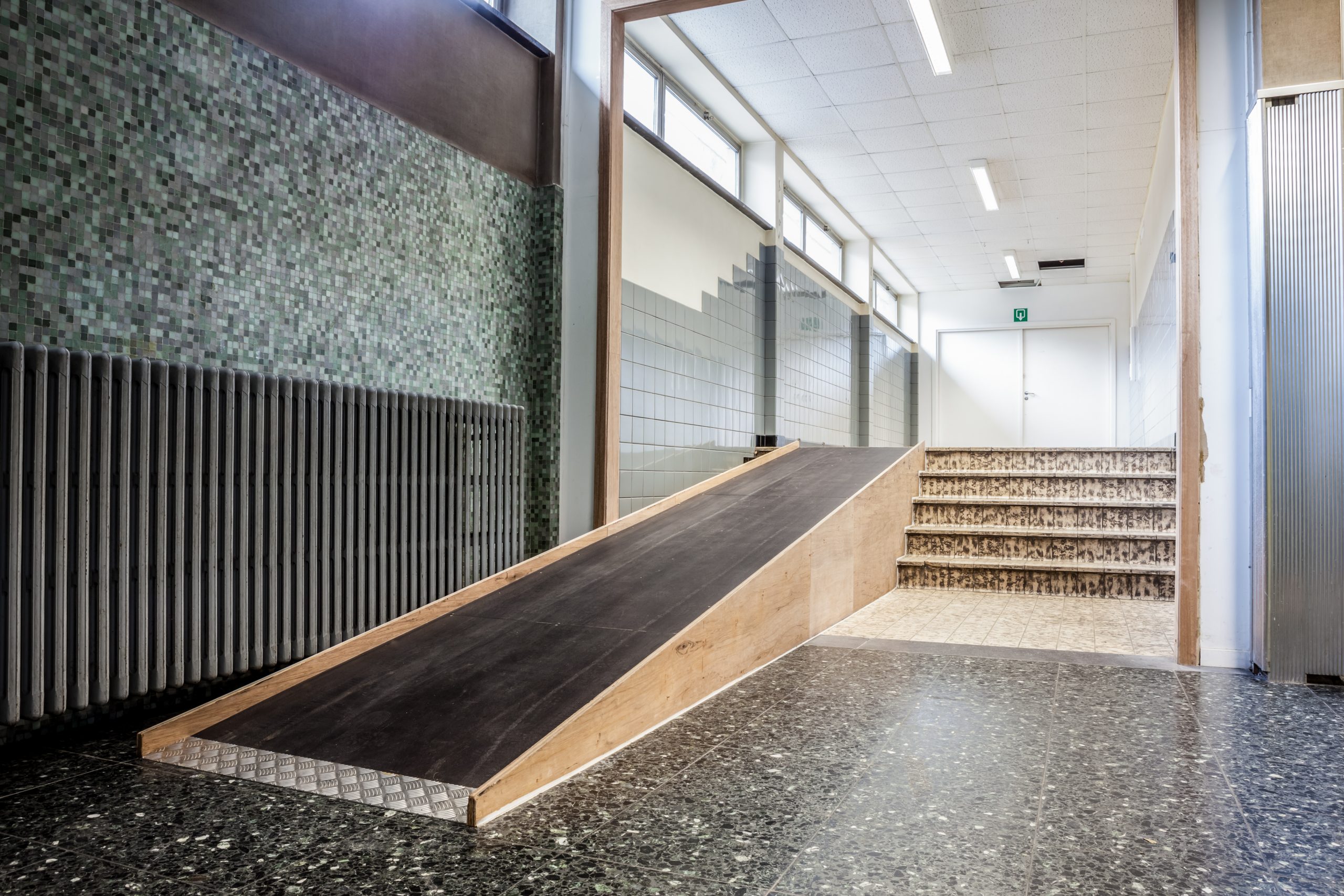When you think of a residential aged care facility, you probably imagine calming colours like beige and cream, handrails along the walls and wide doorframes. These are not just a cliché: residential aged care facilities have to cater to many different conditions presented by their residents, such as dementia, restricted mobility and assistive equipment such as wheelchairs. This is called universal – or inclusive – design.
So what do older Australians actually need regarding facility accessibility? And what are facility designers currently doing to optimise accessibility and accommodation for the growing population of older Australians?
In this article, you’ll find information about the impact of universal design on older Australians, universal design around the world, and the new government standards on the horizon.

How does design impact the lives of older adults?
Depending on a person’s condition, design can have a huge impact upon the way they perceive their external relationships, experiences and environments. For example, people who require wheelchairs to optimise their mobility would be severely restricted in terms of movement if the doors around their home were not built to accommodate wheelchairs. Thanks to wheelchair-accessible design being adopted many years ago for residential aged care facilities, wheelchair accessibility has been trickling through various design standards and is slowly becoming a core expectation for general infrastructure design.
Another example of conditions requiring universal design is the interaction between dementia and design. Dementia is a complex and often distressing condition, but the effect that supportive and universal design can have on someone with the condition is immense, largely because people with dementia find it difficult to separate themselves from their social and physical environments (AGDH, 2021). There are various considerations to dementia-friendly design, including familiarity, legibility, accessibility and comfort, which not only affect the resident but also their social security: friends and family are more likely to visit if the facility provides sitting areas for large and small groups, group activities to engage in such as garden walks, and communal food services (Ausmed Editorial Team, 2019).
Clearly, universal design – regardless of whether the design is optimised for physical or mental conditions – is hugely important when in relation to residential aged care facilities. However, one of the main difficulties regarding universal design for residential aged care facilities, or any shared living environment, is the possible undercutting of one form of inclusivity by another. If dementia patients react adversely to regimentation, will specified walking paths for older residents in hallways trigger possible deterioration? This is where research into universal design is heading: almost invisible adaptations that simply make life easier instead of encouraging deterioration or dependence.
Successful universal design takes these possibilities into account and creates avenues for as many people to live comfortably in a particular facility as possible.
What is already being done to ensure universal design in residential aged care facilities?
In short: a lot of research. Just last year, the Department of Health issued a call for senior Australians to submit what they most wanted to see in their future residential aged care facilities. The call requested opinions on design elements that ensure accessibility, safety features, ideal locations, suitability for diverse communities and dementia-friendly design. The Department of Health also requested that residential aged care providers offer opinions on current design elements that work for staff and residents, as well as those that make it harder for high-quality care to be provided.
In Victoria, there is a branch of the Department of Health called the Victorian Health Building Authority (VHBA). This branch is responsible and accountable for ‘the planning and delivery of the Victorian Government’s multibillion-dollar health infrastructure program including $16.6 billion in managed assets and $9.21 billion in planning and delivery' (VHBA (1), 2022). As such, the VHBA has published a list stipulating the guiding principles of universal design, which includes principles such as flexibility in use, tolerance for error, low physical effort required, and size and space required for easy use (VHBA (2), 2022). While actual designers probably won’t use this as a support for their work, residential aged care providers can use it to understand the importance – and simple implementation – of inclusivity in design.
Other countries are also proving that universal design is becoming the new norm. In 2009, the Norwegian Ministry of Children and Equality published an action plan titled ‘Norway universally designed by 2025: The Norwegian government’s action plan for universal design and increased accessibility 2009-2013.' (NMCE, 2009) In particular, this action plan incentivised the quick uptake of universal design by empowering older adults to use technology – such as social media and phones – to call out business and infrastructure providers for exclusive designs on new buildings (NMCE, 2009). Researchers in the U.S. have described universal design as a key towards ‘successful ageing’; universal design can ensure low probability of disease, a high level of physical and cognitive function, and an engaged lifestyle – the three signs of ‘successful ageing’ (Carr et al, 2013).

What do we know about the upcoming design standards?
The new Residential Aged Care Accommodation Framework Design Standards will be instated on 1 July 2024, and is a response to Recommendation 45 from the Royal Commission into Aged Care Quality and Safety Final Report (AGDH, 2022).
In the meantime, the Department of Health is collecting survey data – mainly qualitative experiential responses from older Australians, current residents and providers – that will heavily influence the new expectations and regulations regarding universal design.
Senior Australians, especially those living with cognitive impairment or dementia, will benefit from better quality accommodation design and more choice. By adopting national design standards, we will give people entering residential aged care greater confidence that the facility they choose will be better able to meet their needs. (AGDH, 2022)
The Department of Health has also requested that technical experts, such as architects or dementia specialists, provide insights into what should be mandated and regulated in the new Standards.
Two papers have been published regarding the upcoming implementation of the new framework: an overview discussion paper, and a general design and innovation discussion paper. While feedback has officially closed for these papers, you can contact the team working on the new framework via accommodationdesign.reform@health.gov.au.
What can you do in the meantime?
To stay up to date with the Residential Aged Care Accommodation Framework, sign up to the Department of Health’s Engagement Hub for notifications.
To familiarise yourself with the benefits and basic foundations of universal and inclusive design, complete these Ausmed resources:
- Environmental Design in Dementia Care - Ausmed
- 6 Tips for Dementia-Friendly Design - Ausmed
- Providing a Welcoming Service Environment in Aged Care - Ausmed
References
- 99U 2019. ‘Kat Holmes: Rethink What Inclusive Design Means.' Viewed 25 February 2022, https://www.youtube.com/watch?v=-iccWRhKZa8
- Ausmed Editorial Team 2019. ‘Environmental Design in Dementia Care.’Ausmed. Viewed 25 February 2022, https://www.ausmed.com.au/cpd/articles/environmental-design-in-dementia-care
- Australian Government Department of Health (AGDH), updated 2021. ‘Designing for people with dementia.’Ageing and Aged Care Branch.. Viewed 23 February 2022, https://www.health.vic.gov.au/dementia-friendly-environments/designing-for-people-with-dementia
- Australian Government Department of Health (AGDH), updated 2022. ‘Improving accommodation in residential aged care.’Accommodation Design Reform.. Viewed 23 February 2022, https://www.health.gov.au/initiatives-and-programs/residential-aged-care/managing-residential-aged-care-services/improving-accommodation-in-residential-aged-care
- Carr, K.; Weir, P.L; Azar, D. & Azar, N.R. 2013. ‘Universal Design: A Step toward Successful Aging.’Journal of Aging Research, vol. 2013. Viewed 23 February 2022 https://www.ncbi.nlm.nih.gov/pmc/articles/PMC3570931/
- Chadwick, D. & Stumpf, B. 2021. ‘Inclusive Design and Accessible Architecture: Why They Are Pivotal Today.’RMJM. Viewed 23 February 2022 https://rmjm.com/inclusive-design-accessible-architecture/
- Norwegian Ministry of Children and Equality (NMCE) 2009. ‘Norway universally designed by 2025: The Norwegian government’s action plan for universal design and increased accessibility 2009-2013.’ Action Plan. Viewed 23 February 2022 https://www.regjeringen.no/globalassets/upload/bld/nedsatt-funksjonsevne/norway-universally-designed-by-2025-web.pdf
- Victorian Health Building Authority (VHBA), updated 2022 (1). ‘Our Organisation.' About Us. Viewed 24 February 2022 https://www.vhba.vic.gov.au/about-us
- Victorian Health Building Authority (VHBA), updated 2022 (2). ‘Universal Design.’ Resources. Viewed 24 February 2022 https://www.vhba.vic.gov.au/resources/universal-design



